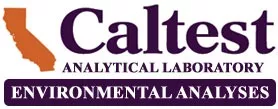Total Suspended Solids Analysis (TSS) and Suspended Sediment Concentration Analysis (SSC)
Total Suspended Solids (TSS) and Suspended Sediment Concentration (SSC) both measure the solid-phase material within the water column. They are similar in the type of filter used for the analysis and the designated drying temperature; however, results can differ due to the initial set up of the analysis.
TSS analysis is a standard in the wastewater industry. The results of the TSS analysis are used to assess the performance of conventional treatment processes and the need for effluent filtration in reuse applications. It is also one of the two universally used effluent standards (along with BOD) by which the performance of treatment plants is judged for regulatory control purposes. TSS analysis has also been used as an indicator of water quality for aquatic and riparian systems because the EPA has identified sediment as the most widespread cause of impairment of rivers and streams, lakes, reservoirs, ponds, and estuaries.
TSS analysis is performed by collecting the total solids portion on a filter. Typically, a Whatman 934-AH glass microfiber filter (or equivalent) which has a nominal pore size of 1.5 mm is used for the analysis, and a pre-determined volume – usually 0.1 L – is passed through the filter. The filter is weighed before the sample is filtered, and after the filter is dried to a constant weight at 103-105°C. Commonly, it only takes a couple of ‘bake and weigh’ cycles to achieve constant weight, but some samples take longer depending on the composition of the solids. The final concentration (mg/L, or ppm) is dependent on the known volume of sample passed through the filter. The method requires that every batch of samples must contain a negative control (DI water passed through the filter), and a sample duplicate at a rate of 10% of the batch. The average of the duplicates should be within 5%; however, Caltest uses a relative percent difference criteria of 20% given the highly variable matrices provided by clients. In addition, Caltest performs a positive control (DI water with a known concentration of celite/cellulose added) as additional information for the client. To meet regulatory compliance, collected samples must begin the analytical process within seven days.
Likewise, the filtration option in the SSC analysis method referenced by the American Society for Testing and Materials (ASTM) also passes a volume of water through the same type of filter, and undergoes the same ‘bake and weigh’ until dry to determine the result. However, the difference is the SSC analysis uses the whole volume collected, and the volume used is determined by weighing the sample container before and after filtration. The filtration method is ideal for samples with concentrations of sand-size material less than about 10,000 mg/L and concentrations of clay-size material of about 200 mg/L. The other two possible determinative options listed in the method are evaporation and wet-sieving filtration. The ASTM method does not contain required quality control; however, Caltest will prepare and analyze a negative control and two positive controls as additional information regarding the performance of the batch for the client.
The TSS analysis has its limitations since only an aliquot of the collected sample is passed through the filter. If there is a substantial percentage of sand size material, it is more difficult for the analyst to obtain a representative subsample of the original sample no matter how much shaking or agitating before removing the aliquot. This is due to faster settling rates of sand size material compared to silt and clay sized materials. The sample could be mixed on a stir plate to best homogenize the sample before removing the aliquot; however, the limiting factor then becomes the opening of a ‘wide bore’ pipette, which is 3 mm. This also has the potential to cause bias in the TSS measurement.
Similarly, the SSC analysis measurement is also dependent on the initial collection. Because it is a whole collected volume analysis, the laboratory is unable to perform a laboratory duplicate. If the client requires precision information on collected matrix, a field duplicate must be collected.
Depending on the end use of the data required, one analysis may be more preferential over the other. The TSS method was designed for the wastewater industry, presumably for samples collected after a settling step at a wastewater treatment facility. The SSC analytical method may be more ideal for surface waters due to the greater variability in the composition of the solids. The United States Geological Survey (USGS) compared TSS to SSC data of samples collected from ‘natural water’ and identified that SSC values tended to exceed their corresponding paired TSS values, and the tendency increased as SSC concentrations increased, particularly when sand-size material exceeded about a quarter of the sediment dry weight. It is important to note that because of this difference, SSC and TSS analytical results are not interchangeable.
American Public Health Association (APHA). 1997. Standard methods for the examination of water and wastewater. American Public Health Association, American Water Works Association, and Water Pollution Control Federation. 20st Edition, Washington, D.C.
American Society for Testing and Materials (ASTM), 2000, Standard test methods for determining sediment concentration in water samples: D 3977-97, vol. 11.02, Water (II), 395-400.
Gray, J.R., G. D. Glysson, L.M. Turcios, and G.E. Schwarz. Comparability of suspended-sediment concentration and total suspended solids data. U.S. Geological Survey, Water-Resources Investigations Report 00-4191, Reston, VA. 2000.
Metcalf & Eddy., George Tchobangoglous, Franklin L. Burton, and H. David Stensel. Wastewater Engineering: Treatment and Reuse. 4th ed. Boston: McGraw-Hill, 2003.
For more information, or a quote, please call us or email info@caltestlabs.com
